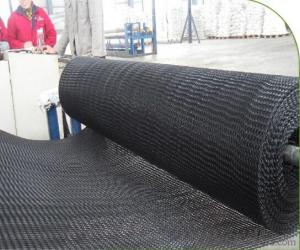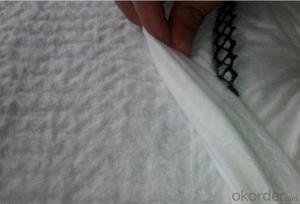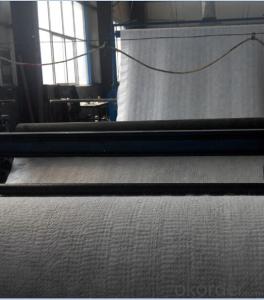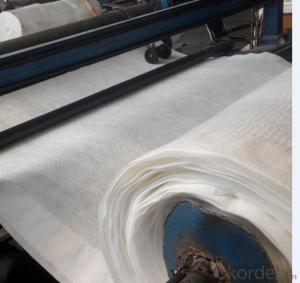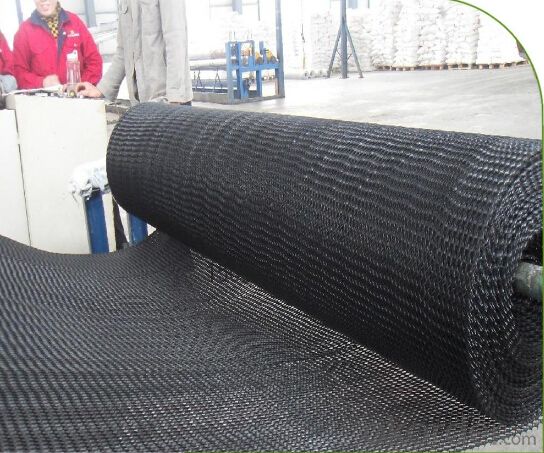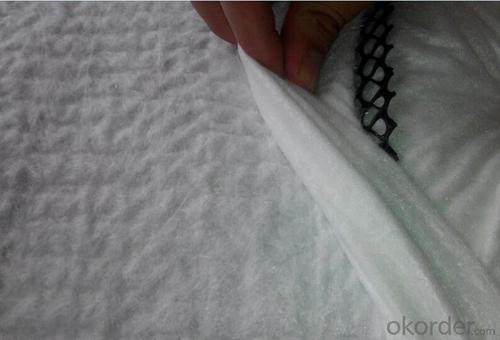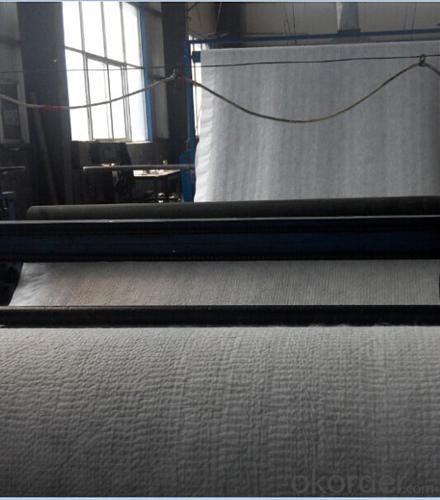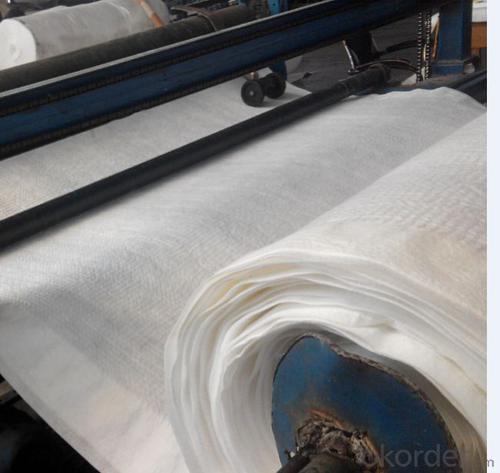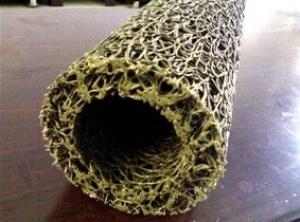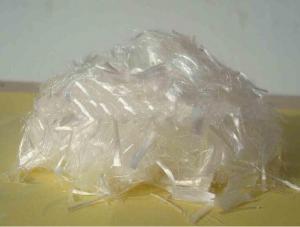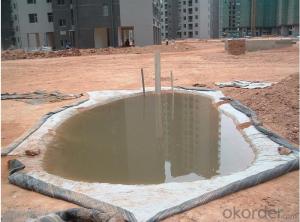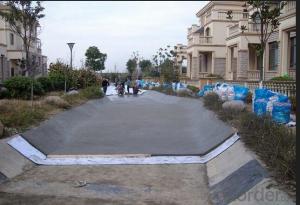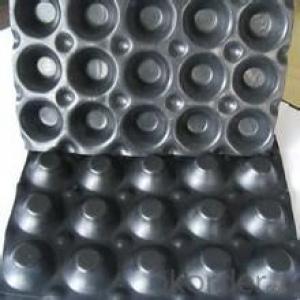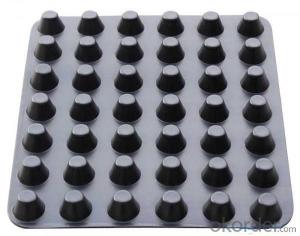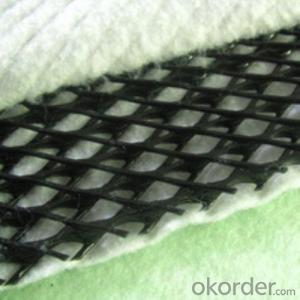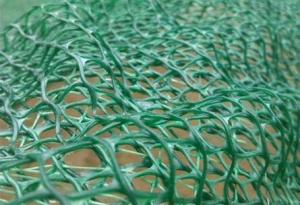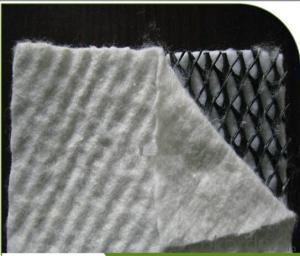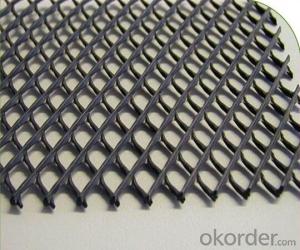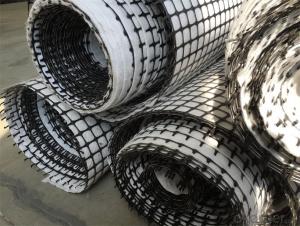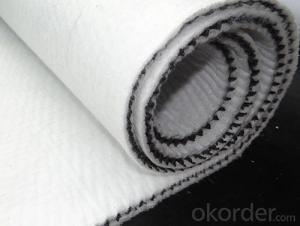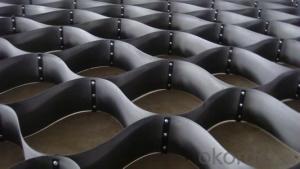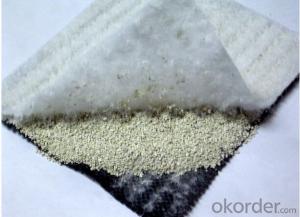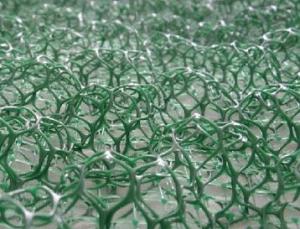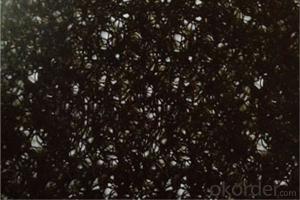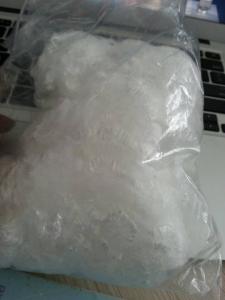Tr-dimension Composite Geonet ;Drainage Geocomposites
- Loading Port:
- Qingdao
- Payment Terms:
- TT OR LC
- Min Order Qty:
- 2000 m²
- Supply Capability:
- 200000 m²/month
OKorder Service Pledge
OKorder Financial Service
You Might Also Like
HDPE Drainage Geocomposite / Composite drainage geonet
Description :
Drainage Geocomposites are engineered to replace costly, conventional open graded aggregate and/or perforated- pipe subsurface drainage systems. The Geocomposite Drainage is created by laminating a filtration geotextile on one or both sides of a Geonet. Geocomposite Drainages have reached acceptance as state-of-the-practice because they provide sufficient in-place drainage and offer reduced material cost, installation time and design complexity over conventional systems.
Application:
1) Landfill drainage;
2) roadbed and road drainage;
3) railway drainage;
4) tunnel drainage,
5) underground structure drainage,
6) the retaining back wall drainage;
7) gardens and sports ground drainage
Features:
1)Excellent drainage function, can bear long time hige press load
2)High tensile and shear strength
3Reduce the rate geotextile embedding into the core of geonet, can protect long time stable water conductivity
4)Tri-dimension composite geonet for drainage can bear more than 2000kpa compression load
5)Its anti-compression capacity is much larger than common geonet for drainage
6) Certificate :ISO14001:2004, ISO9001:2008
Specifications and technical parameters:
Drainage network core | units | Specification | ||||
Unit weight | g/m2 | 750 | 1000 | 1300 | 1600 | |
Thickness | Mm | 5.0 | 6.0 | 7.0 | 7.6 | |
Hydraulic conductivity | m/s | kx10-4 | Kx10-4 | Kx10-4 | Kx10-4 | |
Elongation | % | 50 | 50 | 50 | 50 | |
Tensile strength (core netwaork) | kN/m | 8 | 10 | 12 | 14 | |
Geotextile | g/m2 | Heavier grades of geotextiles can be bonded to geonet on request | ||||
Usages:
In the railway, highway and other transportation infrastructure, drainage system safety and the service life
of the project and its have inseparable relationship, in which the geotextile material is an important part
of drainage system, the drainage effect of 3D composite drainage net is particularly notable. mainly
used for tunnels, municipal engineering, reservoir, revetment in drainage engineering.
FAQ
1. Which payment do you accept?
For you convinience,our payment can be L/C,TT
2. Is free sample available?
We can supply free samples if you need.
3. How about your quality?
We have strict quality control system, we make testing on incoming raw material and finished products. Your third party testing is also welcomed. With high quality, our products are used on government projects at home and abroad. Our product quality is accepted by clients from all over the world.
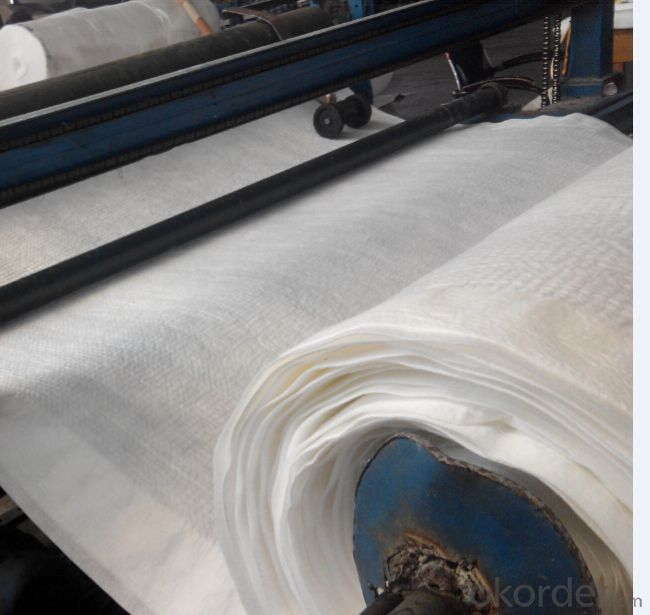
- Q: How can geosynthetic panels be used in dam rehabilitation projects?
- Geosynthetic panels can be used in dam rehabilitation projects for various purposes, such as erosion control, slope protection, and seepage control. These panels are placed on the surface of the dam or along its slopes to prevent soil erosion and stabilize the structure. They also help in reducing water infiltration and controlling seepage, thus improving the overall performance and safety of the dam. Additionally, geosynthetic panels can be used to reinforce weak areas of the dam, enhancing its strength and stability.
- Q: What are the advantages of using geosynthetic materials in road embankment construction?
- Using geosynthetic materials in road embankment construction offers several advantages. Firstly, geosynthetics provide enhanced stability and strength to the embankment, reducing the risk of slope failures and soil erosion. These materials also improve drainage and prevent the accumulation of excess water, thereby increasing the lifespan of the road. Additionally, geosynthetics are lightweight and easy to install, saving time and labor costs during construction. They also offer environmental benefits by reducing the need for traditional construction materials, such as soil and stone, which can deplete natural resources. Overall, geosynthetic materials are a cost-effective and sustainable solution for road embankment construction.
- Q: What are the specific applications of geosynthetic clay liners in landfill projects?
- Geosynthetic clay liners (GCLs) have specific applications in landfill projects primarily for their exceptional hydraulic performance and containment capabilities. GCLs are used as a barrier system within landfills to prevent the migration of leachate, which is the liquid produced by the decomposition of waste, into the environment. They serve as an effective hydraulic barrier, ensuring that leachate is contained within the landfill and does not contaminate adjacent soil or groundwater. Additionally, GCLs provide a cost-effective solution for landfill projects due to their ease of installation and low maintenance requirements. They can be quickly and efficiently placed, reducing construction time and costs. The clay component of GCLs swells upon contact with water, creating a self-sealing effect that enhances their containment ability. Furthermore, GCLs offer excellent chemical resistance, making them suitable for containing a wide range of waste materials, including hazardous and industrial waste. The liners effectively prevent the migration of pollutants from the landfill into the surrounding environment, safeguarding both human health and ecosystems. Overall, the specific applications of geosynthetic clay liners in landfill projects revolve around their ability to provide an impermeable barrier, resist chemical degradation, and offer cost-effective installation and maintenance, ensuring the containment of leachate and protection of the environment.
- Q: How do geotextiles aid in soil separation in earthwork applications?
- Geotextiles aid in soil separation in earthwork applications by acting as a barrier between different types of soil layers, preventing their mixing and maintaining their distinct characteristics. This helps in enhancing the stability and performance of the structure being built on top of the soil, as well as preventing erosion and improving drainage.
- Q: How do earthwork products help with stormwater management?
- Earthwork products such as permeable pavers, retention basins, and bioswales help with stormwater management by facilitating the infiltration and storage of rainwater. These products allow rainwater to seep into the ground, replenish groundwater supplies, and reduce stormwater runoff, which helps prevent flooding, erosion, and pollution of water bodies.
- Q: How are geosynthetics used in drainage systems?
- Geosynthetics are used in drainage systems to enhance their performance and longevity. These materials, such as geotextiles and geomembranes, are placed in the soil or gravel layers to separate different materials, prevent soil erosion, and filter water. They also help to control the flow of water, distribute it evenly, and reduce the risk of clogging, thereby improving the overall efficiency and sustainability of drainage systems.
- Q: How do earthwork products contribute to flood control?
- Earthwork products, such as embankments and levees, play a crucial role in flood control. These structures are designed to redirect and manage the flow of water, effectively reducing the risk of flooding. By creating barriers and channels, earthwork products help contain and control water levels during heavy rainfall or flooding events. Additionally, they serve as protective measures for low-lying areas, preventing floodwater from reaching vulnerable communities and infrastructure. Overall, earthwork products are essential in mitigating the impact of floods and safeguarding lives and property.
- Q: Are earthwork products suitable for use in horse arenas?
- Yes, earthwork products can be suitable for use in horse arenas. These products, such as sand or clay, can be used as footing materials to provide a suitable surface for horses to perform on. Properly prepared and maintained earthwork products can offer good traction, cushioning, and support for horses during various activities in the arena. However, it is important to consider factors like drainage, compaction, and maintenance to ensure the suitability and safety of the earthwork products for horse arenas.
- Q: How do earthwork products contribute to groundwater management?
- Earthwork products, such as permeable pavers, retention ponds, and bioswales, play a vital role in groundwater management. These products help to control and mitigate stormwater runoff, allowing it to infiltrate into the ground, replenishing groundwater sources. By slowing down the flow of water and promoting infiltration, earthwork products help reduce the risk of flooding and erosion, while also improving water quality by filtering out pollutants. Overall, these products contribute to sustainable groundwater management by enhancing groundwater recharge and fostering a healthier water cycle.
- Q: What are the advantages of using geocells in earthwork projects?
- There are several advantages of using geocells in earthwork projects. Firstly, geocells provide stability and reinforcement to the soil, preventing erosion and soil movement. They also offer increased load-bearing capacity, allowing for the construction of structures on weak or unstable soils. Additionally, geocells are cost-effective as they require less fill material and excavation compared to traditional methods. They are also easy to install and maintain, saving time and labor. Moreover, geocells promote sustainable practices by using recycled materials and reducing the need for natural resources. Overall, geocells provide a durable, efficient, and environmentally-friendly solution for earthwork projects.
Send your message to us
Tr-dimension Composite Geonet ;Drainage Geocomposites
- Loading Port:
- Qingdao
- Payment Terms:
- TT OR LC
- Min Order Qty:
- 2000 m²
- Supply Capability:
- 200000 m²/month
OKorder Service Pledge
OKorder Financial Service
Similar products
Hot products
Hot Searches
Related keywords
